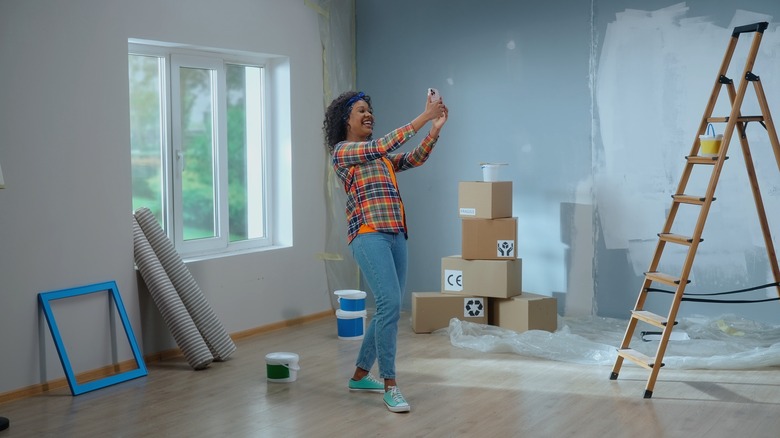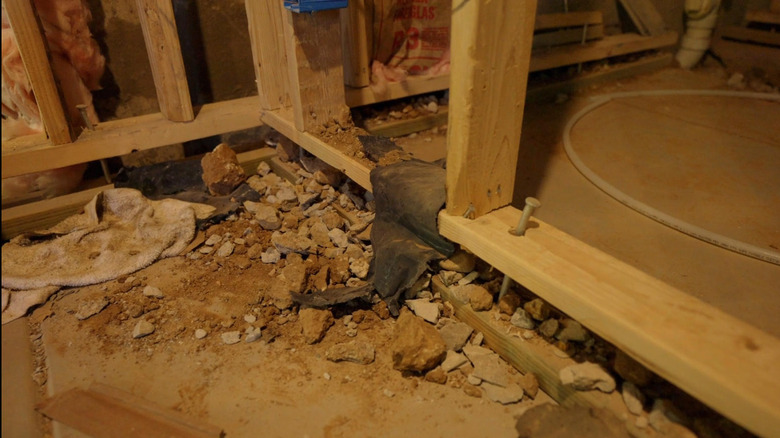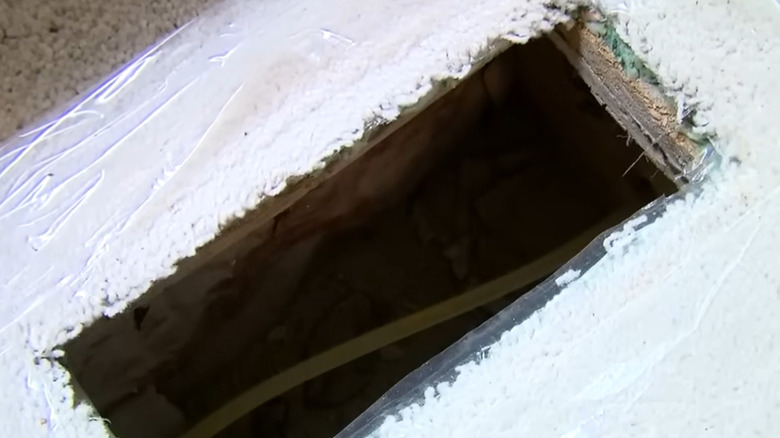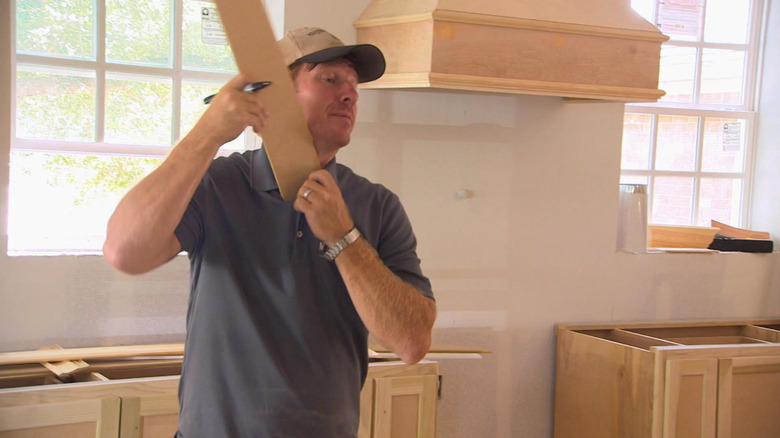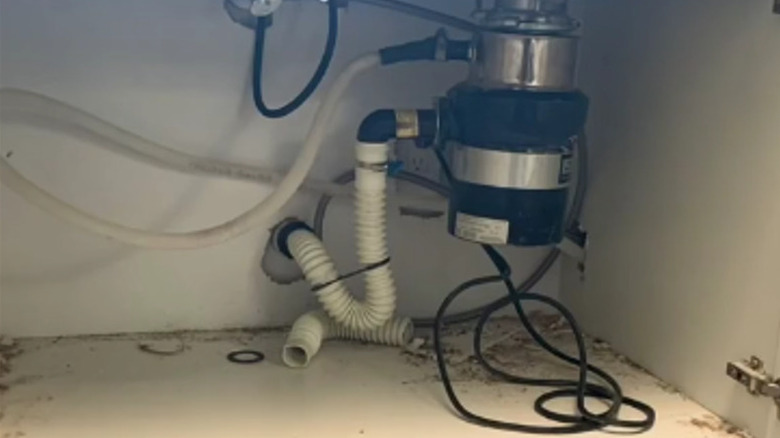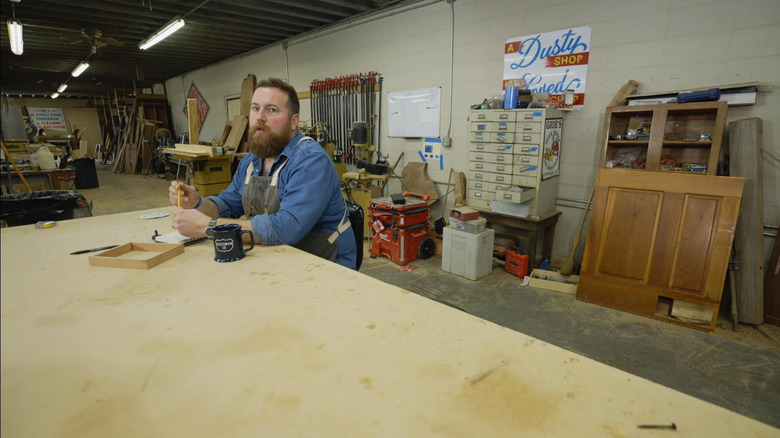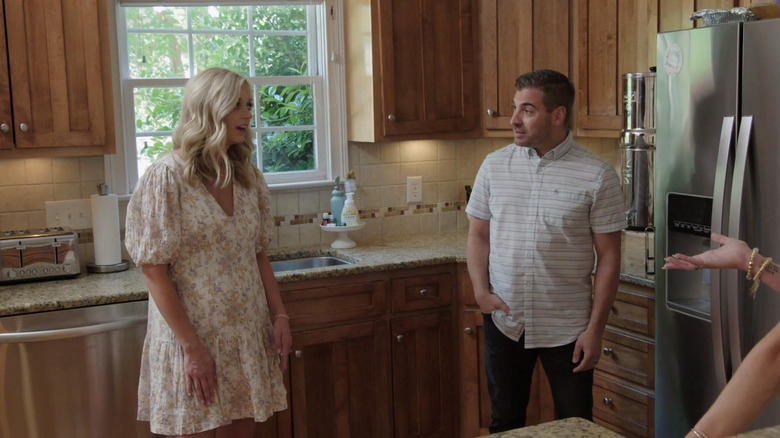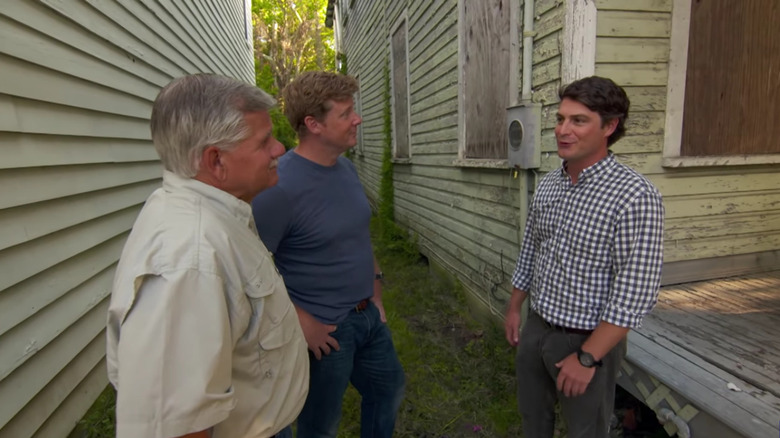HGTV Manipulated Expectations For DIY Projects (Don't Let It Happen To You)
If you stood quietly in the corner and watched a construction crew renovate, say, an outdated kitchen, I doubt you'd walk away with the impression that you could knock out a similar project the following week. You probably wouldn't know what was happening half the time. But it's too easy to see that same process in an hour-long compressed and sanitized HGTV show and think, "That's something I could manage. Let's order some lumber!" Getting in over your head is a state that follows overconfidence as surely as the big reveal follows a commercial break. And there's no better way to overstock your confidence reserves than watching home renovation shows.
When my wife and I started building our house in 2020, we took a step that seemed to address some new pandemic-era economic realities. We would have no debt and no mortgage payments. We would be able to get by with a much lower income. And I no longer had a job, so there was time for learning and building. It all seemed very concrete and sensible. But the decision was informed by a lack of information that wasn't helped by watching an endless stream of home renovation programming built around easily resolved drama, propped up by a swarm of (often unseen) labor.
Without real budgets to ground them, HGTV projects can expand into huge (and hugely time-consuming) monstrosities that aren't tenable in the real world of retail materials, day jobs, and increasingly edgy spouses. The projects tend to spread their effects into other areas: changes to the home's underlying structure, near-permanent adjustments to everyday household budgets, and the need for gut-wrenching tradeoffs. So please, do yourself a favor: don't let HGTV manipulate your expectations for DIY projects.
HGTV is no YouTube University
Don't misunderstand. Wanting to do things yourself — to stretch and expand your skills — is a good thing. And there's probably no better way to learn new skills in the comfort of your own home than video. YouTube has replaced the awkward DIY content of early HGTV programming with an on-demand pool of personalities and a range of skill levels that cable programming can't achieve. Meanwhile, HGTV stopped telling you how to do things and instead refined a formula that seems to show how even ordinary folk can pull off these major renovations with only a moment or two of difficulty and drama.
YouTube's home renovation content is instructive in a different way. Successful YouTube series about building and renovation projects have all the same elements: likable homeowners, big dreams, limited budgets, and dramatic setbacks. What tends to be different is the pace and the inaccessibility of movie magic. Real people do things on realistic schedules, and there's no hidden budget to bring in unseen crews, and no behind-the-scenes editing suites in which time is compressed so that everything always gets done before the big reveal.
Of course, HGTV knows that its viewers aren't blind to these realities, and incorporates these tensions into the drama. Rot or termite damage is discovered just in time for a commercial break, after which it's milked just enough to be interesting but not discouraging. The problems are resolved in minutes with a phone call about increasing budgets or some narration about a near-painless tradeoff: the bathroom you've never seen won't get done, or the exterior will get paint instead of new siding. For all we knew, that's all there was to know.
You don't know what you don't know
Experience is the most valuable asset in the world of construction, without which building theory and the best tools are useless. Experience is how you instinctively avoid some problems (because you've dealt with them before, probably numerous times). It's how you resolve other problems efficiently. Experience comes with a mental catalog of alternatives, emergency measures that can save your neck (or your house, or your marriage). These are fallback positions, or pressure-release valves for over-compressed budgets and timeframes.
Inexperience, on the other hand, can leave you where homeowners Russ and Kara Overman found themselves in an episode of "Rico to the Rescue." After a disastrous attempt at working with "a guy named Shane" to finish their basement, the Overmans brought in an HGTV expert, Rico Leon, who in turn brought in a general contractor named Poonam. That's at least three layers of experience on top of the actual labor, fighting to get a job done on time and on budget, and giving legal advice to boot. How much of that structure and oversight do you really have the experience to take on yourself?
Obviously, skill is important to the construction and renovation of a home, but design skills are critical, too. When you see an apparently effortless design spun by an HGTV host, don't assume it's something you or your partner can do well without experience. In addition to aesthetic chops, a good interior designer is part architect and part builder, and understands far more about building and renovations than you'd guess.
TV problems are solved a little too easily
While drama is the goal of any reality television show, it's certainly not your goal as a DIY-inclined homeowner. The ease with which drama gets resolved on HGTV is as much a facade as any other aspect of these shows. But the very real damage done has to be dealt with or lived with. Homeowners Deena Murphy and Timothy Sullivan learned this in the aftermath of a "Love It or List It" episode that left viewers with the impression of a happy resolution, but left their home "irreparably" damaged, as it was described in the eventual lawsuit. Because of a confidentiality agreement, not a lot of details emerged, but court documents and news broadcasts suggest the home was made ready for TV, not ready for life. It turns out the problems were not solved a little too easily, after all.
The need for a timely shot for a television show is one kind of pressure, but it doesn't compare to the kinds of pressure you might face as a homeowner, spouse, or parent. Try this exercise. Choose between installing shoe molding and putting up a Christmas tree, or painting a door frame versus spending time with your newborn. If HGTV, with all its resources, can't manage to finish painting a wall, you might not either. If "love it or list it" are your choices on TV when a problem arises, sometimes your real-life choices are "love it or live with it."
You'll never be that insulated from decisions and the process
Even insiders acknowledge that homeowners (and viewers) are insulated from reality during an HGTV renovation. Rachel Whyte, who was a Magnolia photographer during "Fixer Upper" Seasons 2 and 3, had her new Waco home renovated by the Gaineses. While she was happy with the outcome and the relatively surprise-free process, she points out that she had little input in the process and that some of the results changed the moment the staged furnishings were driven away. In fact, Whyte told Country Living that she only met with Joanna Gaines twice during the remodel — on "real estate day" and during the design meeting. Beyond that and a few texts and calls, the couple was basically isolated from the work going on in their new home.
The biggest problem in the episode was the rejiggering of an island that didn't seem to be working in the available space, and the solution was apparently worked out (on a board, which was then stuffed into Chip's shirt) with no input from the Whytes. Needless to say, this is not how work progresses in normal, camera-free life. Questions, changes, and additions always come up, and it's not always a smooth process to work out the details of choices and budgets with contractors.
You think no one cuts corners
Cutting corners is the name of the game when a budget constrains your renovation project, but some corners can't be shaved without creating dangerous situations. Ron Onyon learned this after his house was renovated by the aptly named show "Renovation Impossible." What's impossible is grasping the state the production company apparently left Onyon's home in.
"What I thought it'd take to fix the house," Onyon said near the beginning of the episode, "I was way off." Apparently, so were "Renovation Impossible" host Russell Holmes and his creative partner Paige Poupart. Not to be too catty about it, but Holmes and Poupart created what appears to be an interior from a very nice 2017 mobile home. The trouble is, like the kitchen finishes, the entire remodel was a thin veneer, underneath which was a tangle of wires ready to catch fire and plumbing more perched than installed. Onyon's TikTok account is a horror show of renovation gone wrong.
You think such things could never happen to you when you're working on your own home, and maybe not. But without the mental tools to do the many jobs correctly, you will occasionally cut corners, if less dangerous ones. And you will hide your corner-cutting, and everything will have a lovely veneer of perfection right up until the moment an appraiser or an in-law is about to open your front door.
They don't fix everything, and you don't have to either
Of course, some things need doing right, and some things don't need doing at all. In the throes of planning your masterful DIY remodel, or at least mine, there will be many opportunities to reject this project or that. You probably won't take many of these opportunities, but you should. One of the dirty little secrets hidden from HGTV viewers is that you don't have to do everything possible when remodeling your home. Though they try to hide it, HGTV renovation shows don't remodel every room, as we learned when "Home Town" couple Erin and Ben Napier revealed they left the living room out of the episode featuring their country home because it simply didn't need to be done.
In most HGTV renovations, they try to hide these skipped rooms from you because it takes away from the cultivated drama about schedules and budgets. The picture painted is, once again, not reality. But here's the thing: They should leave rooms out, and so should you. If your goal is to do the impossible, you're setting yourself up for inevitable failure.
TV shows camouflage the burdens on daily life and finances
To say that home renovations are disruptive is to undersell it dramatically. Anything that touches a kitchen, bathroom, or sleeping space will have immediate and probably severe consequences for your day-to-day life. But you don't often see this reflected honestly on an HGTV show. Though you hear about it briefly, you certainly didn't see Nick and Kristen Mancini living in their kids' playroom and washing dishes in a bathtub during their "Christina in the Country" reno project. But most shows won't let homeowners occupy the property while it's under construction. Rachel Whyte told Country Living that her family "basically lived as nomads for the entire time the house was being renovated. We slept in 17 different beds in four months. It was an adventure!"
This, as you can imagine, is hard on finances and relationships. "This crew," Ben Napier said during the "Home Town" episode about his country home renovation, "they're going to quit on us after this house."
Aside from housing, other expenses related to the project are often obscured in HGTV shows as well. Real-life costs include plans, permits, labor, high-cost trades (electrical, plumbing, and HVAC), re-work necessary for code compliance, and furniture. (As I mentioned, the staged furniture doesn't usually stay unless you're prepared to pay extra for it.) And where the HGTV folks get a discount, you probably will not.
Check your overconfidence
"This Old House" had a "sweat equity" component by which the homeowners were expected to participate in their home's renovation. There's something comfortably parental about it: If you're going to reap the rewards, you must do some of the work. This treatment of the DIY impulse was a progenitor of HGTV homeowners awkwardly swinging sledgehammers on demolition day, except that "This Old House" might spend an hour teaching you which sledgehammer to use and how to use it less awkwardly. And, importantly, it made no effort to disguise the fact that some work was better left to professionals.
Of course, it's not a lack of willingness to invest sweat equity that gets most DIYers in trouble; it's an overabundance of willingness. We learn from the fast pace and sanitized outcomes of HGTV that we should be able to pull off whatever we set out to do. And that might even be true, but we won't be working alone, and it won't be done by the next commercial break.
Ultimately, it's up to us to keep tabs on our own overconfidence. Are you really going to invest tens of thousands of dollars on something you "learned" from a show about a random couple seeking a new house, or a home remodel dreamt up by Lil' John? It's worth a moment to reconsider.

